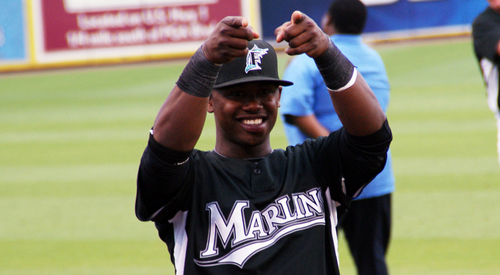
Florida Marlins: Consistently frugal, consistently competitive
Led by rotation ace Josh Johnson, hot starts from Gaby Sanchez and Emilio Bonifacio, and a revamped bullpen with the second-best ERA in baseball right now, the Florida Marlins are second in the NL East with a 23-16 record and are just two games behind the Philadelphia Phillies for the division lead.
More impressively, they’re doing it on a $56.9 million payroll; sixth-lowest in the league.
Then again, that’s been the story of the Marlins throughout their entire existence: exceeding expectations and remaining competitive despite operating on a shoestring budget.
The Marlins played their inaugural season in 1993 with an unbelievable payroll of $18 million and gradually increased it every year until they won the World Series in 1997 with the seventh-highest payroll in baseball.
After that, payroll was slashed every year until 2000, when it fell below $20 million. The Marlins were then among the bottom 20 percent in team payroll for the next few years, including when they won a second World Series title in 2003 on a $45 million payroll, sixth-lowest in baseball.
Built on player development, production from offseason acquisitions Ivan Rodriguez and Carl Pavano, and the emergence of young starters Dontrelle Willis and Josh Beckett, the Marlins were able to go on a Cinderella run and win it all that year, besting five clubs that had payrolls over $100 million.
[php snippet=1]
At the end of the 2005 season, after operating on the highest payroll in franchise history at $60 million, the Marlins executed the largest payroll drop in team history down to a meager $15 million for the 2006 season, also lowest in team history. Many moves took place to cause this, including the offseason deal that shipped ace-caliber pitcher Beckett and highly-paid Mike Lowell to the Boston Red Sox for four prospects including Hanley Ramirez, who instantly became one of the best players in baseball, at league-minimum salary for his first three years in a Marlins uniform as well.
In the five seasons since that trade, the Marlins have had the lowest payroll in baseball three times, and never ranked higher than 28th. They finished in the top-20 in winning percentage in four of those five seasons, including when they finished 10th-highest in winning percentage in 2009 despite operating on an MLB-lowest $36.8 payroll. They also finished 17 games ahead of the division rival New York Mets, who were working with a $142 million payroll.
The Marlins haven’t only had a constantly low payroll, though. They’ve had consistently low attendance over the years, largely in part to having to play their home games in a terrible baseball atmosphere; a football stadium that has changed names six times since their inception.
After drawing over three million fans in their inaugural season, the Marlins have eclipsed two million fans in a season only once; in that first World Series run in ’97. They have had the worst attendance in the National League in each of the last five seasons, including a stretch from 2006-2008 when they had the worst attendance in all of baseball.
The Marlins’ reputation of having low payrolls as a result of low attendance was met with intense criticism over the last few years, and that criticism prompted Major League Baseball to conduct an investigation into their finances, specifically regarding how they were spending the money that they received from revenue sharing. The results revealed that the Marlins’ 2007 and 2008 payrolls were paid solely with revenue sharing funds, with money even left over to put towards ballpark maintenance and other costs.
The investigation resulted in the Marlins agreeing to increase payroll and have Major League Baseball monitor their finances for the 2010, 2011, and 2012 seasons, the latter being the Marlins’ first season in their new ballpark.
That new ballpark, situated in the Little Havana section of Miami, will finally give fans a baseball-only facility to enjoy Marlins games, and it’s easily accessible from virtually all major highways. It should go a long way in spiking interest in the franchise and driving attendance figures up for years to come, convincing the Marlins’ front office to spend more on their payroll as well.
Should that happen, the Marlins might finally get the support and respect that they deserve.
[php snippet=1]

